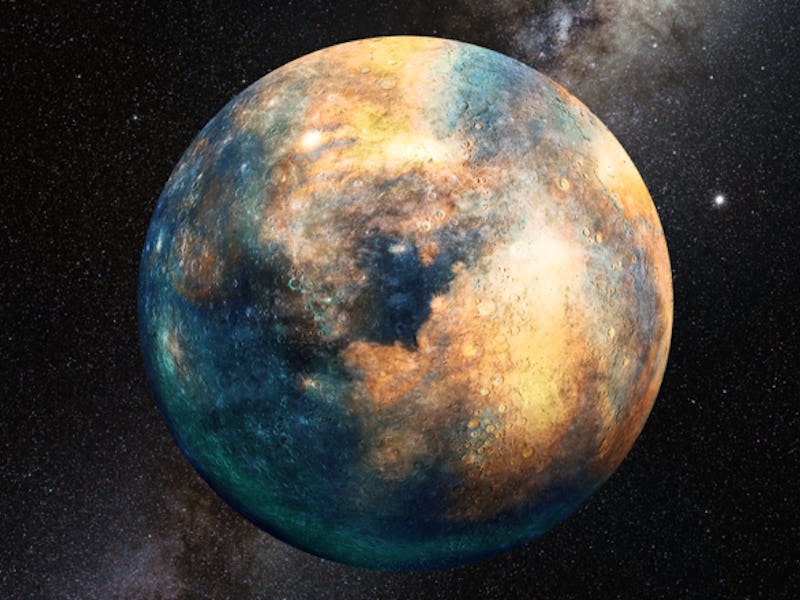
It has long been believed that at least one, if not several, distant planets orbit our Sun. But telescopes on Earth cannot see them beyond all the cosmic dust and debris. All scientists have to go by is the strange orbit of leftover space rocks, known as Kuiper Belt objects, or “KBOs,” which seem to go against the normal plane of our solar system.
A new research paper on the orbits of minor planets, to be published in the Astronomical Journal, suggests that an unknown, unseen “planetary mass object” may lurk on the far edges of our solar system.
The mystery object controls the orbit of KBOs that were left over from the formation of the solar system.
It's really tough to see through the Kuiper Belt, as this illustration shows.
Kat Volk and Renu Malhotra of the University of Arizona’s Lunar and Planetary Laboratory see a clue in how those KBOs are all tilted together on a plane that’s different than the other objects in our solar system. They think this off-kilter belt is due to a Mars-sized planet.
“The most likely explanation for our results is that there is some unseen mass,” Volk said. “According to our calculations, something as massive as Mars would be needed to cause the warp that we measured.”
The planet is not visible from Earth's telescopes but makes its existence known by ruffling the orbital plane of distant Kuiper Belt objects.
The team made their calculations by analyzing the tilt angles of more than 600 KBOs, that can be compared to spinning tops, to assess their wobble.
“Imagine you have lots and lots of fast-spinning tops, and you give each one a slight nudge,” Malhotra said. “If you then take a snapshot of them, you will find that their spin axes will be at different orientations, but on average, they will be pointing to the local gravitational field of Earth.”
They then had to determine how big a planet would have to be to influence the belt in such a profound way. After crunching the numbers, the believe is it would be between the size of Earth and Mars, and would be tilted about eight degrees … that’s nearly straight up, so the planet would have very little seasonal change.
A planetary mass object the size of Mars would be sufficient to produce the observed perturbations in the distant Kuiper Belt.
It is also possible that the warp in the belt is caused by multiple planets, or none at all, and the KBOs were just spun off by an extremely close passing star.
Volk, Malhotra, and many other astronomers are awaiting sky surveys from Pan-STARRS and the Large Synoptic Survey Telescope, which will begin observing in 2022, to really get an accurate depiction of the farthest reaches of our solar system. Until then, the lonely planet will just have to wait.